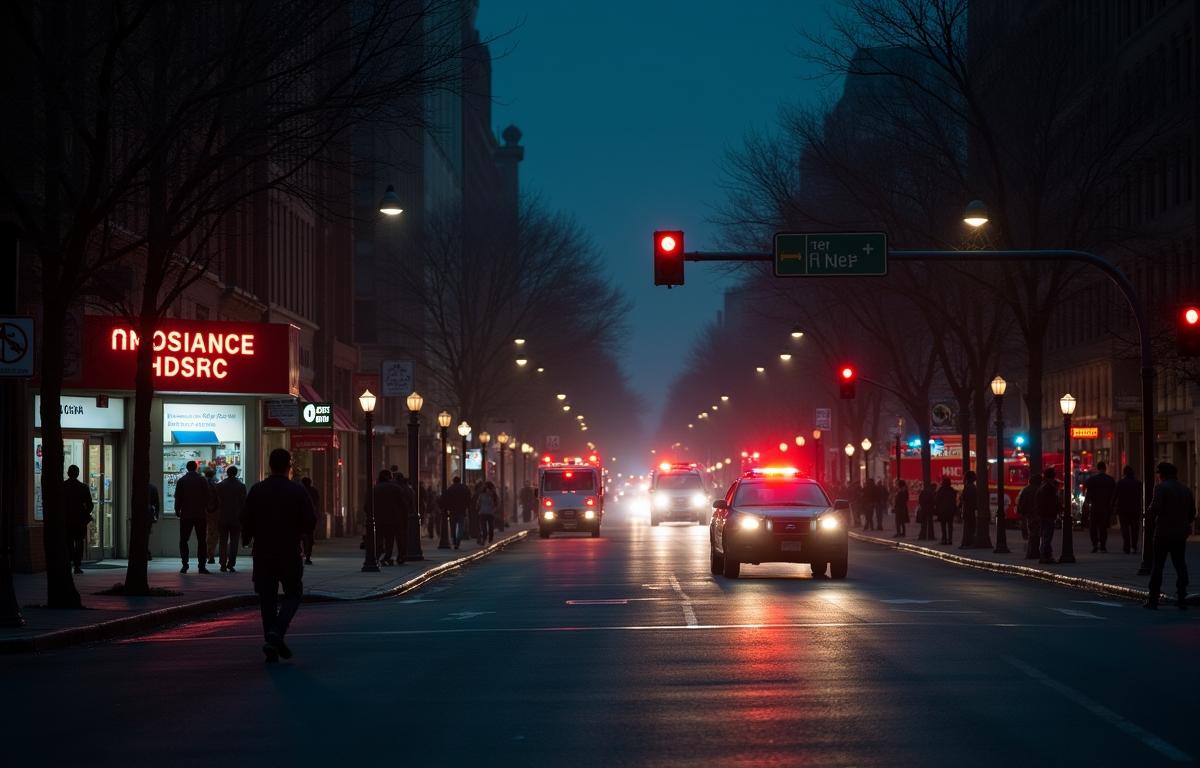Unexpected disruptions can impact public safety and services, darkening streets and complicating daily life. Even brief outages can disrupt daily routines and create a sense of alarm. When the lights go out, people often scramble for flashlights and candles, but the scope of a blackout goes far beyond mere inconvenience. Critical services rely on electricity for everything from keeping medical equipment online to maintaining safe water supplies. Once the grid goes down, the strain on public safety agencies and emergency operations can grow rapidly, creating a ripple effect that reaches every corner of community life.
Life for many of us revolves around technology, and modern society relies on seamless connectivity. Yet prolonged outages can reveal hidden vulnerabilities. Hospitals, first responders, and even local grocery stores count on stable infrastructure to deliver essential care and goods. Neighborhood guardians like traffic lights and security cameras lose their ability to do their jobs. A single storm or malfunction can spread chaos, disrupting normal activities, compromising safety, and throwing critical systems into crisis mode.
The Immediate Impact on Public Safety
Local police and fire departments often see a rapid increase in calls when the electricity goes out. Burglar alarms can malfunction without power, sometimes flooding emergency lines with false alerts. Meanwhile, areas that rely heavily on traffic signals can quickly become accident-prone hotspots. That first wave of chaos makes it harder for authorities to direct limited resources where they are needed most.
When public safety officials respond to multiple incidents simultaneously, their capacity can become overwhelmed. Confusion escalates if power failures continue for a long period. In some areas, essential communication networks may also take a hit, making it harder to tally which neighborhoods need assistance. These compounding challenges magnify not only the immediate risks, but also the potential for overlooked emergencies to grow worse.
Strains on Emergency Services
Paramedics need reliable electricity to run specialized equipment that monitors and stabilizes patients. Firefighters depend on operational communication systems, and backup lighting is crucial if they must enter dark buildings during a rescue. Every minute counts when medical or rescue services are stretched thin. Without consistent electrical supply, response times can slow, and the margin of safety narrows.
Generators do provide a stopgap, but fuel supplies and mechanical reliability can limit how long they remain effective. Extended outages can cause hospitals to prioritize certain procedures while postponing others. Smaller clinics might not have the same resources available, putting vulnerable patients at greater risk. For these reasons, local health departments and community organizations often emphasize proactive disaster preparedness to cope with sudden deficits in electrical power.
Threats to Healthcare Facilities
Doctors’ offices and hospitals require not only electricity for lighting, but also for ventilators, dialysis machines, and important monitoring systems. A stable supply ensures emergency surgeries can still proceed, medicines stay refrigerated, and critical life-support equipment remains functional. Smaller medical centers may face a tougher battle if they lack reliable backup systems.
In high-risk scenarios, patients could be transferred to larger facilities, but that approach can strain resources across entire regions. Healthcare professionals often rely on advanced data systems to track patient information and medication supplies. A sudden blackout compromises the ability to update or retrieve these records in real time, forcing many staff members to revert to paper documentation, which can slow the pace of care.
Transportation and Traffic Disruptions
Driving becomes more hazardous when traffic signals go dark, and public transportation networks can come to a standstill as power lines stop feeding trains and streetcars. When that happens during a rush hour or a significant event, commuter frustration escalates, and city streets can devolve into gridlock. Local authorities might struggle to coordinate traffic flow manually, especially across large intersections.
Railways also face delays or cancellations if the signals that guide trains lose power. For airports that rely on sophisticated navigation and scheduling systems, losing electricity can disrupt flights, baggage handling, and air traffic communications. Travelers might face lengthy delays or cancellations, further inflaming an already difficult situation. Restoring normal operations demands careful cooperation between aviation authorities, railway operators, and utility companies.
Ripple Effects on Airports and Public Transit
Modern airports are highly automated ecosystems. From baggage scanners to runway lights, countless systems require uninterrupted power. If a blackout occurs during peak travel times, large numbers of passengers could become stranded. Even if backup systems kick in, staffing shortages may increase due to grid-locked traffic on city roads, compounding the hassle for stranded travelers.
When public buses and light rail lines depend on electric power, a long outage may bring them to an abrupt halt. Commuters faced with canceled routes may have to scramble for alternative transport, filling ridesharing services or taxis. The resulting congestion can ripple through entire metropolitan areas, raising the stress level for everyone trying to navigate home or to work.
Communication Breakdowns
Electricity powers internet routers, cell towers, and landline switching stations. Once power failures strike, residents may lose consistent access to news updates, alerts, and even 911 lines. While smartphones can keep you connected for a few hours if you have battery left, large-scale blackouts often disable cell towers over time. Even local radio stations can go silent if generators run out of fuel.
For people in remote locations, reliable phone or internet service might already be fragile. That connectivity is a lifeline for medical needs, emergency requests, or even coordinating help from family members in a different region. When communications networks fail, it magnifies the sense of isolation and may delay vital instructions from local authorities or disaster management teams.
The Role of Backup Technology
Private homes and businesses sometimes rely on small generators, solar arrays, or portable battery packs. These can provide short-term relief, but capacity varies widely. Certain essential facilities have strict regulations ensuring that larger standby systems are in place. Nevertheless, extended blackouts strain these backups and can expose any weak links in preparedness.
In data centers and corporate hubs, elaborate battery arrays aim to bridge outages until backup generators fire up. Even then, constant vigilance is required to ensure a smooth handover. These systems may not run indefinitely if outages drag on. As a result, crucial data resources are at risk, and any service that depends on those servers might experience moments or even hours of downtime.
Impact on Food Storage and Water Supply
Supermarkets rely on refrigeration units to keep perishables from spoiling. A lengthy blackout can lead to mass food waste, price increases, and even health risks if spoiled products are inadvertently sold. Ice supplies also run out, which can further complicate safe food storage at home. Such disruptions can intensify stress for families juggling the basics of daily life.
Water treatment plants and pumping stations might also need electricity to process and distribute clean water. When they lose power, residents could face low pressure, boiling advisories, or even outright shortages if the water towers or backup generators fail. This puts an additional burden on public safety, as local authorities must ensure alternative supply lines are in place. In times of severe weather or natural disaster, losing both electricity and water escalates the crisis to a new level.
The Community’s Role in Preparedness
Local neighborhoods can tackle some of these challenges by organizing preparedness plans, sharing resources, and checking on vulnerable neighbors. Simple steps such as keeping a supply of bottled water or a small emergency kit can ease the initial shock of a sudden outage. Community-driven efforts might also involve sharing news through battery-powered radios or creating volunteer patrols to keep an eye on darkened streets.
Even beyond immediate crisis response, communities often rebound more effectively when people collaborate. Neighborhood associations, local charities, and city agencies can host workshops on installing backup generators or maintaining emergency supplies. This fosters a readiness mindset, making it easier to reduce chaos the next time an outage disrupts daily life. By recognizing that blackouts affect everyone whether it’s traffic confusion or compromised hospital services residents can encourage civic leaders to bolster grid reliability and emergency management plans.
Government bodies and utility companies also benefit from strong public support for infrastructure upgrades. When everyone is aligned on the importance of reliability, budgets and policies tend to favor robust electrical networks and faster response strategies. Investing in alternative energy sources, stronger power lines, and modern monitoring tools can lessen the severity of future outages. While no system is foolproof, a prepared and informed public can help curb the worst outcomes that arise when the electricity suddenly disappears.



